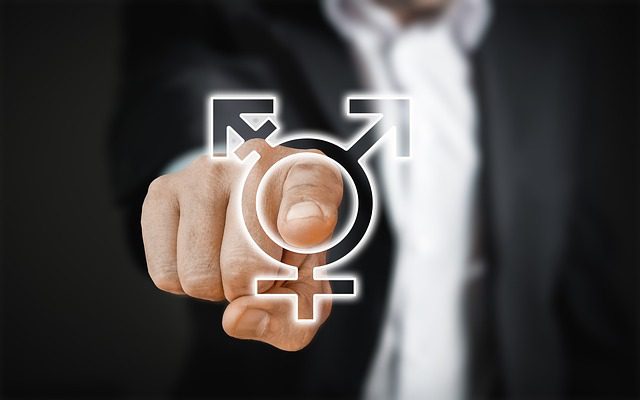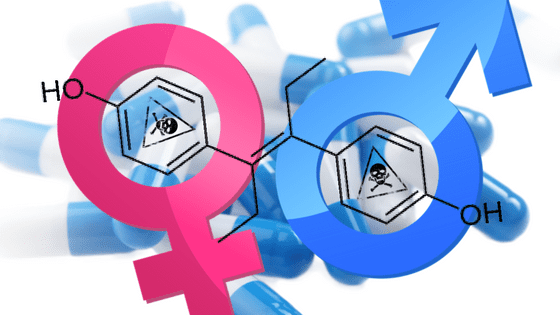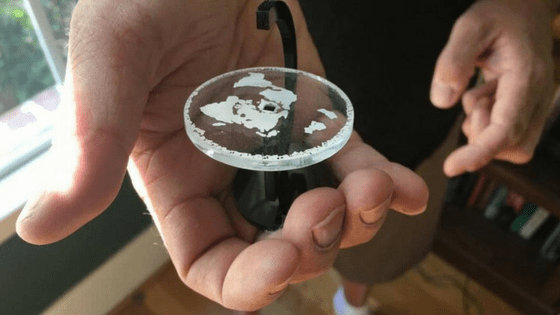Why is there such a conflict about gender?

There have been at least three different methods to define a person’s gender:
Visually at birth: A doctor typically inspects the body of a newborn. In the vast majority of cases, the doctor can easily identify the sex by looking at the external genital structures. This is typically referred to as the newborn’s gender or “biological sex” which is documented on their birth certificate.
Checking DNA after birth: Sometimes a visual check of the newborn fails for one of two reasons:
- In approximately 1 out of about 2,000 births, the newborn’s sex cannot easily be determined visually. That is, the newborn is intersexual. Their genital structures do not fit either the conventional female or male pattern and a specialist in sex differentiation needs to be called in to determine the newborn’s sex. This may lead to a subsequent analysis of the sex chromosomes in the newborn’s DNA. Typically, a female will not have a “Y” sex chromosome. Various combinations of sex chromosomes exist: XX (female) and XY (male) are by far the most common, but XXY, XXYY, etc. also exist.
- Androgen Insensitivity Syndrome (AIS) occurs in about one in 13,000 births. This causes a newborn to have “XY” [male] chromosomes in the cells of their body that are unable to respond to androgen or “male” hormones. “The newborn AIS infant has genitals of normal female external appearance.” They are typically identified as female at birth, recorded as female on their birth certificate, raised as girls, and self-identify their gender as female throughout their lifetime. They are indistinguishable in appearance from female girls and women at all ages. A group of them is shown in the above photograph. However, they are infertile and don’t menstruate. They often don’t find out that they are genetic males until their teen years, and then only as a result of a medical examination of their DNA.
Self-identification later in life: Starting approximately at the age of 3, most children will identify themselves as having either a female or male gender. In the vast majority of children, they are cisgender. This means that they identify their gender as matching their biological sex as shown on their birth certificate.
However, among transgender individuals, most are identified as male at birth. But, later in life, they describe themselves as having a female gender. They often say that they have a female brain trapped in a male body.
Almost as many transgender individuals are identified as female at birth. But, later in life, they describe themselves as being male and having a male brain in a female body.
There is increasing evidence that this belief about their brain gender is, literally, true.
To further complicate matters, some transgender persons identify themselves as having an undefined gender. They might feel they are neither female nor male, have aspects of both genders, or that they switch between genders from time to time.
Also, many young children who identified themselves as being transgender become cisgender later in life.
Conflicts arise when a person or a group will use only one or two of the above methods of defining sex and gender and reject the other(s).
Many religious conservatives define sex by what is on a person’s birth certificate. Many religious liberals and transgender persons themselves define a person’s gender according to their current gender identification.
Can human brains be either male or female?
Robert M. Sapolsky, writing for The Wall Street Journal during late 2013, said that scientists found differences:
In “… an obscure brain region called the forceps minor [that] is part of the corpus callosum, a mass of fibers that connect the brain’s two hemispheres. On average, the forceps minor in cisgender males contains parallel nerve fibers of higher density than in cisgender females.”
Researchers also found that:
- FTM Transgender adolescents, who now identify as male, generally had brains had a higher density nerve fibers, corresponding to cisgender males.
- MTF Transgender adolescents, who now identify as female, generally had brains had a lower density nerve fibers, corresponding to cisgender females.
- In the hypothalamus, a part of the brain that produces hormones.
- The FTM transgender adults, who now identify as males, generally had brains that are stimulated by the scent of estrogen similarly to cisgender males.
- The MTF transgender adults, who now identify as females, generally had brains are stimulated by the scent of androgen similarly to cisgender females.
The findings of all of these studies point to:
- The brains of MTF transgender persons respond similarly, and are structured similarly, to the brains of cisgender females. That is, their biological sex is male, while their gender identity is female and their internal brain structures and responses are female.
- The brains of FTM transgender persons respond similarly, and are structured similarly, to the brains of cisgender males. That is, their biological sex is female, their gender identity is male, and their internal brain structures and responses are female .
This implies that their sense of personal gender is caused by a difference in brain structure, not by being in a state of “gender confusion” as many religious conservatives and others sincerely believe.
How might female brains be formed in a male body — or vice-versa — before birth?
A person’s genital structures start to form early during pregnancy, mainly during the first six weeks.
By 13 weeks, an ultrasound can normally determine the presence or absence of the embryo’s penis and thus predict whether the fetus is a biological male or female.
However, it’s not until about six months into gestation that the fetal brain begins to be masculinized or feminized.
With one process occurring early in pregnancy that develops the sexual organs and a different processes later in pregnancy that develops the brain structures, it appears that a mismatch can occur between a person’s biological gender and their gender identity before birth.
Does God make mistakes when he creates persons who later identify as transgender?
The people at the Back to the Bible Holiness Church in Gwinnett County, north of Atlanta, GA apparently believe that God is not responsible for some people being transgender. On their church sign, they said, simply, that:
“God created man & woman. Satan made gays & transgender. Genesis 5:2.
This passage from the Hebrew Scriptures (Old Testament) says, in the King James translation of the Bible:
“Male and female created he them; and blessed them, and called their name Adam, in the day when they were created.”
Other translations of this verse say that Adam and Eve were called “Mankind,” “Humankind,” “humanity,” “human beings,” etc. — terms that may be easier to understand in the above sentence.
Many Christians would disagree with this congregation’s point of view. They generally believe that God is directly involved in the development in the embryo and fetus at all stages during each pregnancy. Some quote Jeremiah 1:5 when God is recorded as saying:
“Before I formed you in the womb I knew you, before you were born I set you apart. …” (New International Version)
Some believe that God does not make mistakes and that transgender identification happens as a result of the person becoming “gender confused” years after they are born.
Some transgender individuals are accused of believing that God made a mistake when they were formed in their mother’s womb and gave them the brain of one sex and the body of the other sex.
H. Adam Ackley, a Christian pastor and theologian who is intersexed, eloquently denies this, saying:
“…to be born outside the gender binary really isn’t any different than being born with any other form of diversity. To explain to others that we are transgender doesn’t inherently suggest that God made any sort of mistake in creating us as transgender. Even if we seek medical treatment to help us overcome gender dysphoria, [the feelings of distress often associated with being transgender] … we are no more suggesting that God made a mistake in creating us than anyone else who undergoes medical treatment for a medical condition. For example, most religious people wouldn’t think of forcing those born with a cleft palate that required surgical correction to defend their existence theologically, as if their very existence on the planet is some kind of blasphemous allegation of God’s incompetence. Yet [some of] the religious routinely attack those of us who are transgender not only on the basis of gender but as heretics, which many of us find even more painful.”
Alicia Johnson, a former pastor in the Seventh-day Adventist Church and a lesbian, writes extensively about LGBT matters. She notes that Genesis 1:27 is often used to link gender identity directly to biological sex. It says:
“So God made man like his Maker. Like God did God make man; Man and maid did he make them” (Living Bible)
She said:
“… where does this text teach ‘our gender identity is … determined by our birth sex?’ Particularly since by ‘birth sex’ they generally mean sexual organs? I don’t see anything at all about anatomy. …”
“God created gender. Yes. Gender exists. … How might gender be expressed? What do we do when someone’s brain is at odds with their reproductive organs? What should we do when someone’s brain is telling them they are a different gender than what can be perceived on their exterior? What do we do when people are intersex? It certainly doesn’t offer clarity on these kinds of questions. …”
In another essay, she wrote:
“If God’s will for someone’s gender is expressed clearly in their sexual organs, what is God’s will for intersex people? …”
“Sometimes people are unwilling to test their particular theology or ideology against the physical world around us, the world God has given us. This is one such example. Only a steadfast refusal to engage with the implications of the truth of God’s creation as we know it can allow a traditionalist understanding to be maintained on this point.”
“Even though it might make cisgender people uncomfortable, sex organs don’t always fit the binary. And if sexual organs can refuse to fit the binary, why can’t the central nervous system also refuse to fit the binary? Of course it can and does.”
Many — perhaps most — conservative Christians appear to believe that a person’s gender is solely defined by their genitals and/or DNA: A person’s birth-identified gender is thus fixed throughout life. They believe that transgender individuals are simply “gender confused” and are violating God’s intent when they identify as a different gender.
Since the Bible contains many passages limiting the roles that women could have during biblical times, many Christians feel threatened when a person asserts that they have transitioned between female and male.
I sometimes wonder who will be the next group to be discriminated against on religious grounds. The approximately 10% of humans with a homosexual or bisexual gender orientation are now largely accepted in many developed countries. The 0.6% of people who are transgender are well on their way to similar acceptance.
Since little dialogue is occurring among people of different viewpoints, it may take decades before the conflicts over transgender individuals will become close to being resolved.
But who will be next? Perhaps albino individuals? It would be difficult for religious groups to mount a major campaign against them because there are so few: only about 0.006% of humans.
Perhaps faith groups will notice Galatians 3:28, give up attacking minorities, and accept all people as humans with equal rights. Paul wrote, according to the NIV translation::
“There is neither Jew nor Gentile, neither slave nor free, nor is there male and female, for you are all one in Christ Jesus.“
One can always hope.
References
Frequently Asked Questions [about being intersexed],” at: http://www.isna.org/
Sapolsky R M. 2013. The Wall Street Journal. Caught Between Male and Female. At http://www.wsj.com/
Science Daily. 2015. Transgender: Evidence on the biological nature of gender identity. At https://www.sciencedaily.com/
Hendriksen E. 2016. Why are some people transgender?, Quick and Dirty Tips. At http://www.quickanddirtytips.com
Browning B. 2016. LGBTQ Nation. Church sign saying ‘Satan made gays’ covered in black paint by vandals. At https://www.lgbtqnation.com/
Bible Gateway. Genesis 5:2. At https://www.biblegateway.com/
Bible Gateway. Jeremiah 1:5. At https://www.biblegateway.com/
Ackley A. 2014. Huffington Post. ‘God Don’t Make No Mistakes’: Common Sense, Faith-Based Celebration of Gender Minorities. At http://www.huffingtonpost.com/
Bible Gateway. Genesis 1:27. At https://www.biblegateway.com/
Johnston A. 2017. The Bible Never Condemns Transgender Identities. At http://aliciajohnston.site/
Johnston A. 2017. With Trans People, God Doesn’t Make Mistakes, but We Do. At http://aliciajohnston.site/
Ballantyne C. 2009. Scientific American. What causes albinism?. At https://www.scientificamerican.com/
The views presented on this blog are an extension of those presented on the Religious Tolerance website. The purpose of all articles is to compare the full range of beliefs and actions by people who are members of various faith groups within Christianity and other world religions, individuals who are NOT Affiliated with a faith group (NOTAs), and secularists.











